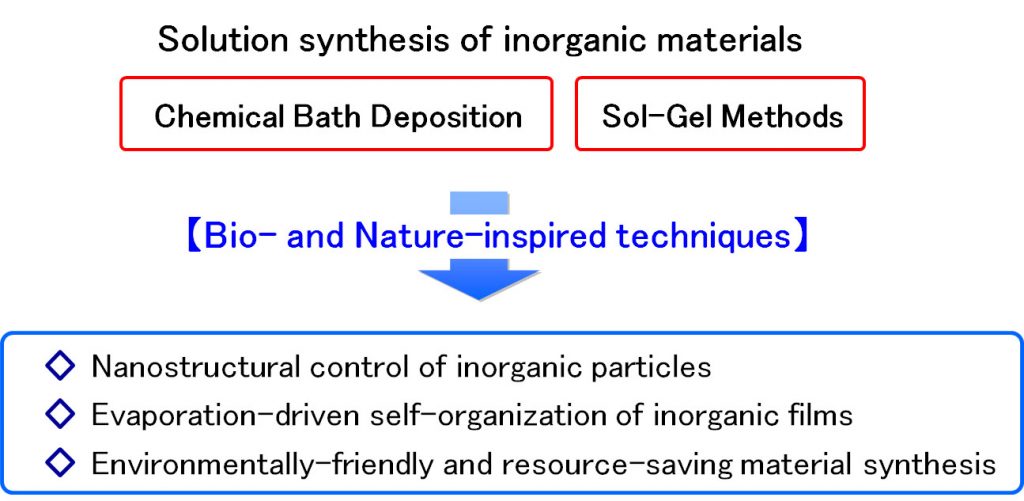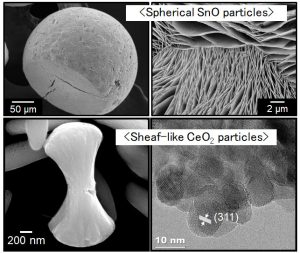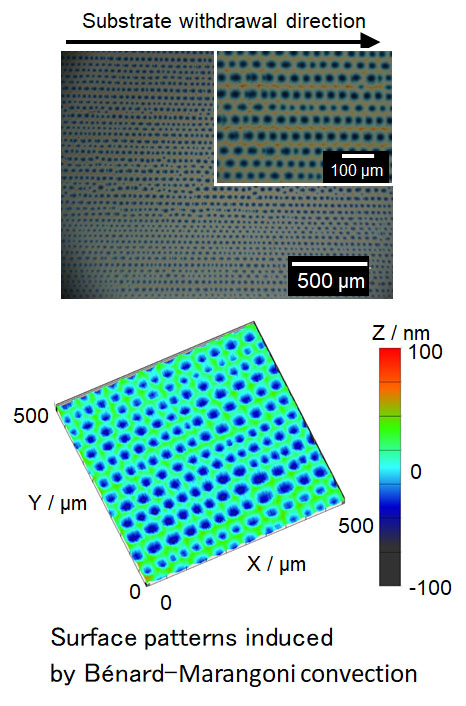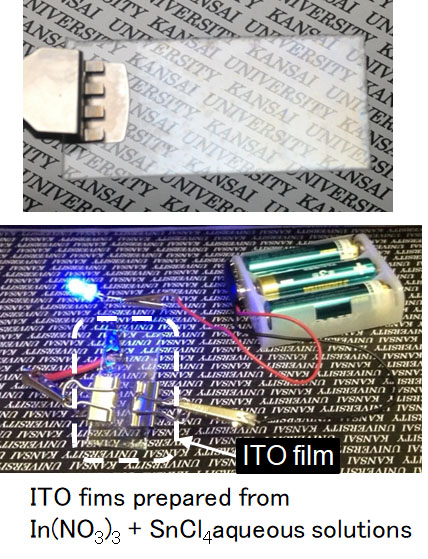RESRARCH

Our group is working on the synthesis of inorganic materials by solution techniques such as chemical bath deposition, sol-gel methods, etc. We focus especially on “bio- and nature-inspired self-organization” as a good model for solution processes for making novel inorganic materials. Spontaneous assembly and organization of molecules, colloids, or particles often result in unique and sophisticated micro- and nano-structures.
1. Nanostructured inorganic materials mimicking biominerals

Natural biominerals such as nacres, sea urchin spines, and eggshells consist of oriented inorganic units less than 50 nm in size, and nanoscale spaces containing biological polymers like chitin, chitosan and gelatin. Such highly-ordered nanostructures are formed by self-assembly and self-organization via interactions between the inorganic crystals and the biological polymers. The polymers contain many polar amino acids that adsorb on the surfaces of the inorganic crystals, creating hierarchical structures consisting of nanoscale crystallites. We have attempted to prepare novel nanostructured inorganic materials by aqueous solution techniques mimicking biomineralization.
2. Evaporation-driven self-organization of inorganic film materials

During the inorganic film coating, solvent evaporation from the coating layer occurs, and often involves convective flows of the solutions on the substrate, resulting in film materials with uneven thicknesses and rough surfaces. Such thickness variations and surface roughening triggered by solvent evaporation are regarded as a self-organization process. Thorough understanding of the evaporation-driven convective flow during coating would enable the development of novel patterning techniques for producing periodic surface patterns on coating films. We have developed novel patterning techniques based on evaporation-driven convective flow mechanism, such as “Bénard–Marangoni convection”, “Coffee-ring effect”, etc.
3. Environmentally-friendly and resource-saving material synthesis

Aqueous solutions containing metal ions are environmentally friendly precursors for metal oxide materials because water is not inflammable or toxic and has a lower volatility. The replacement of the precursor solutions containing potentially harmful solvents by aqueous ones is favorable in industrial fields. We are working on the material synthesis viasynthesis environmentally-friendly and resource-saving process, where inorganic materials are prepared from simple solutions containing only water and metal salts.